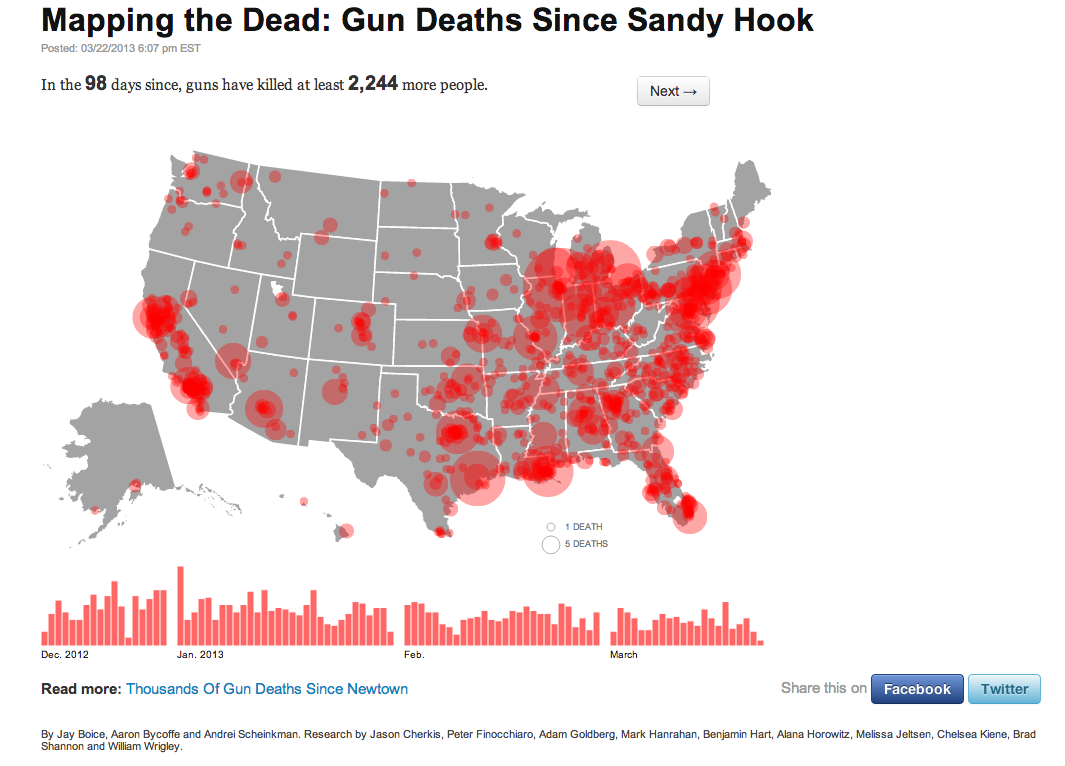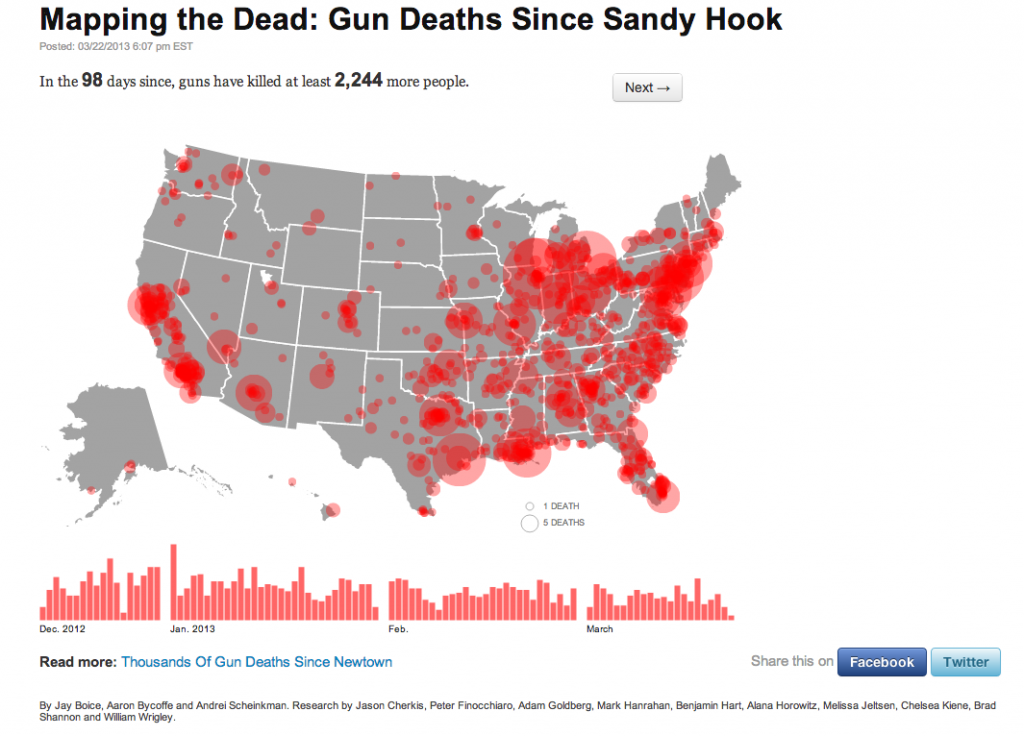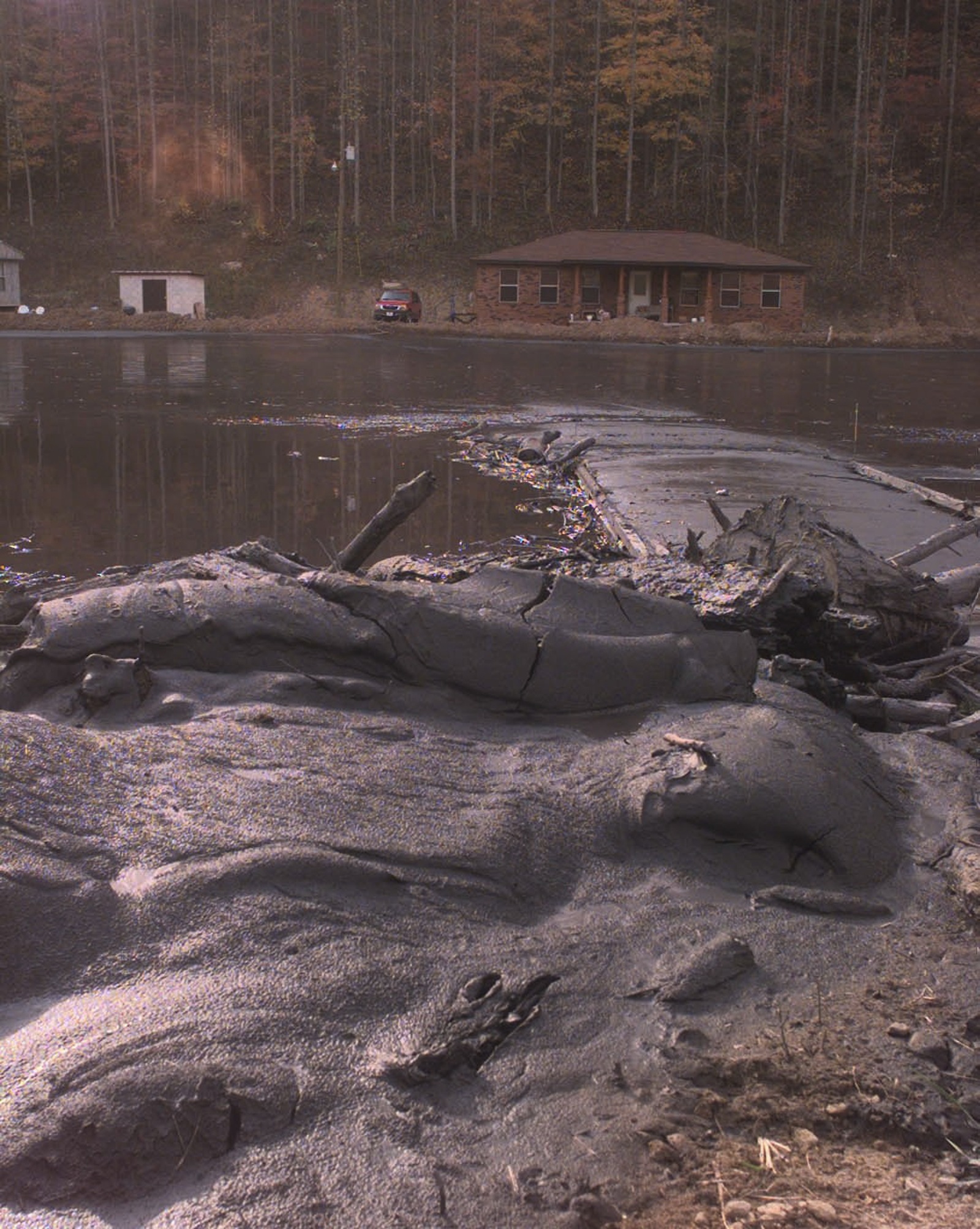Virginia Tech. Tucson. Aurora. Newtown.
Each name evokes frightful images. You knew where you were when you heard about Aurora, when you heard about Newtown. It is time that we, as Americans, sit down and talk about guns and the violence dilemma that we face. Something must be done. All solutions are on the table. This needs to be a discussion–a fair, open dialogue in which we try to determine what went wrong, and what we can do to prevent something like this from happening again. So, where to begin?
Let us start with guns. After all, firearms were the instruments of each murderer in the aforementioned tragedies. But even as we begin, we run into our first issue. Supporters of the second amendment often say, “Guns don’t kill people, people kill people.” Let us stop right there and break down just how misleading this hollow slogan is. The argument that guns do not kill people is wrong, because that is exactly what they are designed to do.
There are two primary uses for a gun: killing something, be it a human or an animal, or practicing killing something through target practice. Gun-rights advocates argue that if we prevented criminals from obtaining guns, then they would just carry out their atrocities with knives or axes instead.[4] First, knives and axes are not designed to kill people. Of course, it is still possible to kill someone with one of those–even Cain killed Abel with a rock. But a gun is expressly intended to deliver death or physical harm to a target as fast as possible.
A mass-murderer would not succeed in killing as many people with another weapon, or even with a less powerful gun. Would James Holmes have killed or injured over fifty people in Aurora with an axe or even a regular handgun?
Of course, gun-rights advocates will also argue that one of the primary reasons to own a gun is for self-defense. That said, introducing a gun into a self-defense confrontation immediately raises the odds of a violent outcome to the conflict; it increases the chances that either the criminal or the defender will be injured or die. While the primary intention may not be to cause harm, in the act of self-defense, deadly violence is permissible in order to save one’s life. And giving the criminal or the defender a gun–a tool that is expressly designed to maim or kill–will simply result in furthering the vicious cycle of violence.
Let us look at another common gun-rights argument. This argument quotes the second amendment explicitly, stating that “…the right to keep and bear arms, shall not be infringed.” The argument here is that since gun ownership is a constitutional right, lawmakers cannot restrict access to firearms in any way. The thing is, the government is not looking to take away all the guns. Lawmakers are just looking to add some common-sense regulations to prevent further tragedy.
In addition, let us consider the date the constitution was ratified and became the supreme law of the land: September 17, 1787. The musket was the most advanced weapons technology at that time. Only able to fire twice a minute, with a range of a mere fifty yards and prone to jamming, it should come as no surprise that battle tactics at the time focused on lining up in brightly colored uniforms and blasting away at each other for ten minutes before charging with horses and bayonets.
In contrast, the AR-15 assault rifle used by alleged Aurora killer James Holmes and alleged Newtown shooter Adam Lanza has a firing rate of 850 rounds per minute, with 30 rounds in each magazine clip combined with an effective range of 600 yards.[1] It is unlikely that our founding fathers could have foreseen such technological advancements in guns, so perhaps our legal rulings should take into consideration modern realities as well as 225-year-old laws.
Now that we have addressed the main arguments against gun control in general, let us discuss specific solutions to the problem. Both the left and the right can agree that America’s long-standing cultural tradition of celebrating and desensitizing violence has become a problem. When the head of the National Rifle Association, Wayne LaPierre, held a press conference after Newtown, he did not blame guns. Instead, he pointed the finger at films such as American Psycho (2000), in which Christian Bale kills people in increasingly disturbing ways.
The traditionally liberal media also took the time to explore the idea that America’s violent culture is the root of our problem.[3] The primary blame, though, seemed to fall upon video games. Specifically highlighted were games such as Medal of Honor and Call of Duty, in which the player guns down countless numbers of faceless, masked, or identical foreign men with funny accents. When President Obama tasked Vice President Joe Biden with exploring solutions to the violence problem, Biden even had a meeting with prominent video game designers.[7] Despite this common attribution, however, not a single scientific study has linked playing violent video games to an increased likelihood of engaging in violent behavior later in life.[7]
Instead, I would argue that video games are not the problem, but rather a symptom of the longstanding tradition we have in the United States of glorifying violence. The media machine of violent movies, books, and entertainment is not to blame, because that is what we, the American people, demand from it.
It is time that we, as Americans, force ourselves to gaze into the abyss and see that we must do something. Let us no longer ignore our dark reflection, the shadow that follows us everywhere. Indeed, we have started to do this. President Obama has already signed a total of 23 executive orders that include various (albeit limited) measures to prevent another Virginia Tech, another Columbine, another Tucson. He has spent an enormous amount of political capital pressuring Congress to do something. We cannot let partisan politics stand in the way of resolving this issue. If there is a time for cooperation, it is now. We can start by banning assault weapons and preventing the sale of weapons clips that contain over ten rounds. There is no reason a civilian needs a military-style assault rifle. But some will dismiss these propositions by arguing that mass murderers and criminals do not follow the law to begin with. To that we respond that these kinds of laws do work.
Let us go back to 1996 in Port Arthur, Australia. Martin Bryant, equipped with two semi-automatic assault rifles, killed 35 people and injured 23 more, and was only arrested by police after his home was set on fire and he was smoked out. Shortly after, Australia passed some of the toughest gun control laws in the industrialized world (despite significant opposition from conservative groups), and initiated a highly successful buyback program for those who wished to sell their guns.[6] These laws are acknowledged to have been a tremendous success–there have been no mass shootings in Australia in the seventeen years since Port Arthur.
Gun control laws do work, and Australia should serve as a model for the U.S., which finds itself in a very similar position to Australia in 1996.
Whatever happens, we cannot stand by and do nothing. In the coming months, politicians on both sides of the aisle will get on their soapboxes and preach their rhetoric. However, until these politicians actually agree to do something, to sign a law, to pass an act, then all this talk will be just that: talk–full of sound and fury, signifying nothing.
Evan Bruning
International Affairs ’17
1 Colt Weapon Systems. (n.d.). Internet Archive: Wayback Machine. Retrieved January 19, 2013, from http://web.archive.org/web/20110616211557/http://www.colt.com/mil/M16_2.asp
2 Gun Violence Prevention – Myths and Facts About Guns – Public Policy | The Joyce Foundation. (n.d.). Home Page | The Joyce Foundation. Retrieved January 19, 2013, from http://www.joycefdn.org/myths-and-facts-about-gun-violence-in-america/
3 Linkins, J. (2012, December 21). NRA Leader Wayne LaPierre’s Much-Criticized Sandy Hook Speech Was Actually Quite Effective. Breaking News and Opinion on The Huffington Post. Retrieved January 19, 2013, from http://www.huffingtonpost.com/2012/12/21/nra-wayne-lapierre_n_2348277.html
4 Lipson, P. (2013, February 1). Only Criminals Have Guns – Forbes.Information for the World’s Business Leaders – Forbes.com. Retrieved March 4, 2013, from http://www.forbes.com/sites/peterlipson/2013/02/01/only-criminals-have-guns/
5 Metcalf, S. (2012, June 27). Aurora shooting: If we want to prevent the next massacre, we need to cure our addiction to evil. – Slate Magazine. Politics, Business, Technology, and the Arts – Slate Magazine. Retrieved January 19, 2013, from http://www.slate.com/articles/news_and_politics/the_dilettante/2012/07/aurora_shooting_if_we_want_to_prevent_the_next_massacre_we_need_to_cure_our_addiction_to_evil_.html
6 Parks, W. H. (2010). International Legal Initiatives to Restrict Military Small Arms Ammunition. Hay Parks International Committee of the Red Cross, 1, 1-18.
7 Upton, M. (2013, January 17). Gun violence: Are video games really the problem?. The Examiner. Retrieved March 1, 2013, from www.examiner.com/article/gun-violence-are-video-games-really-the-problem’




